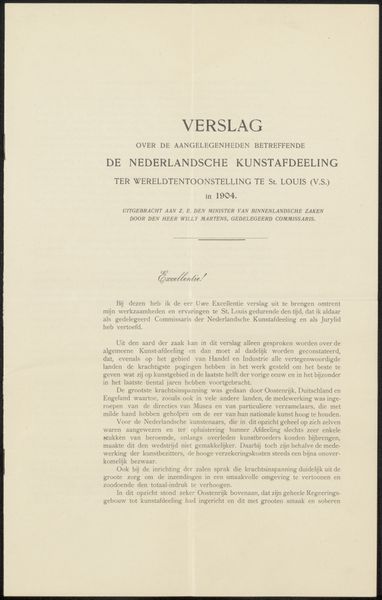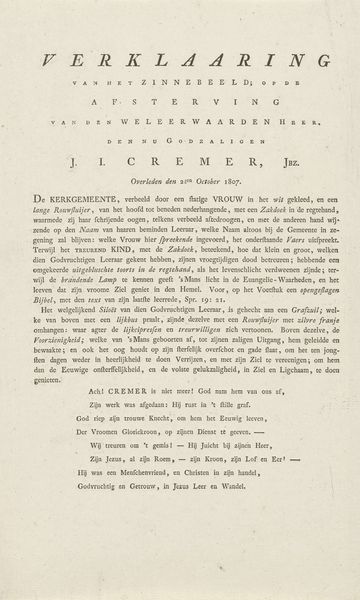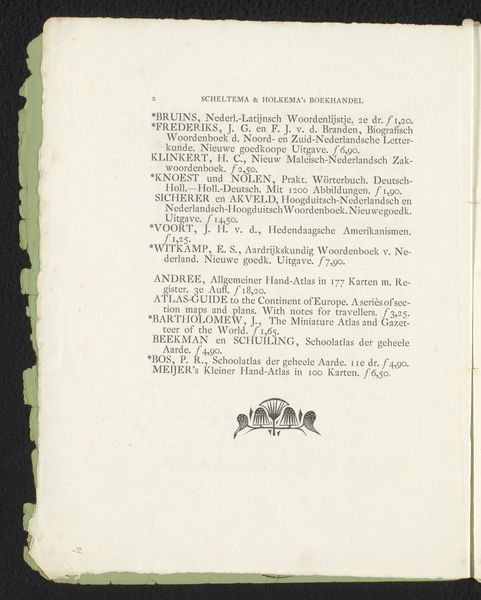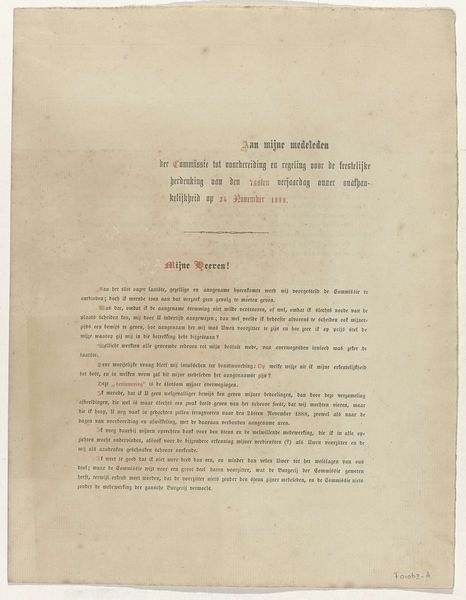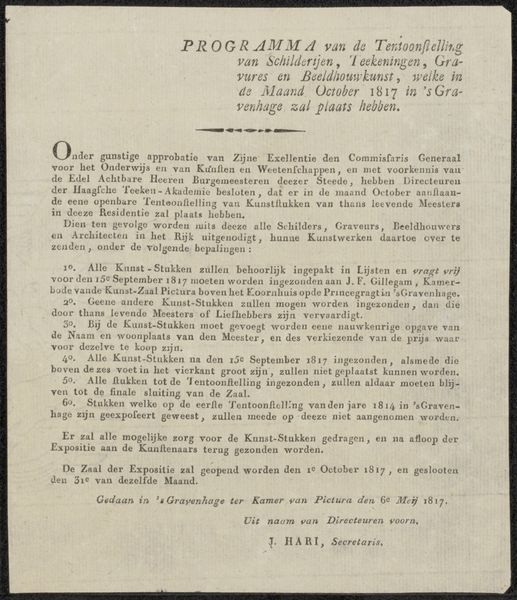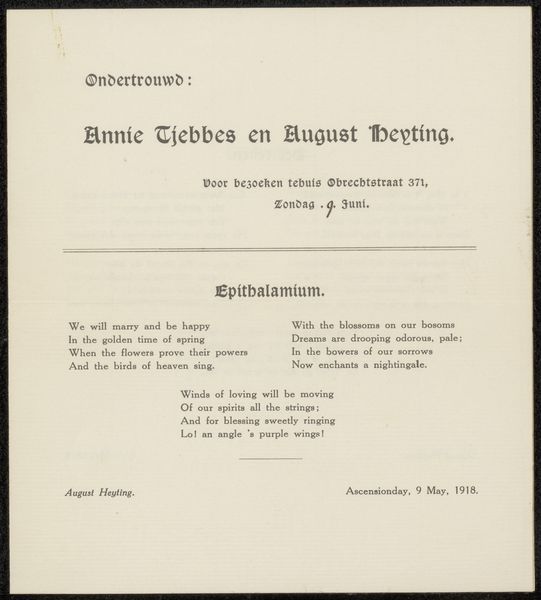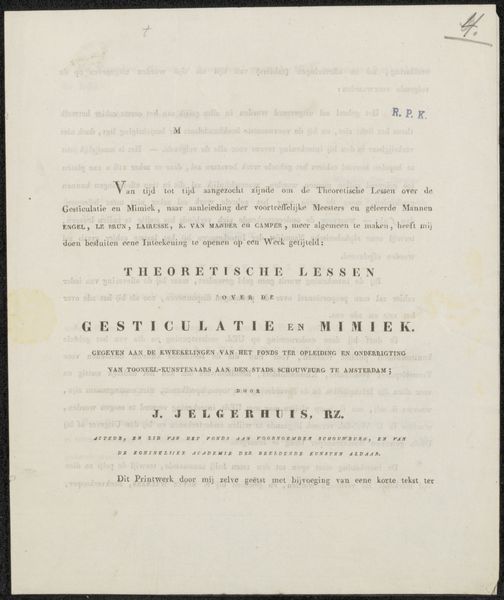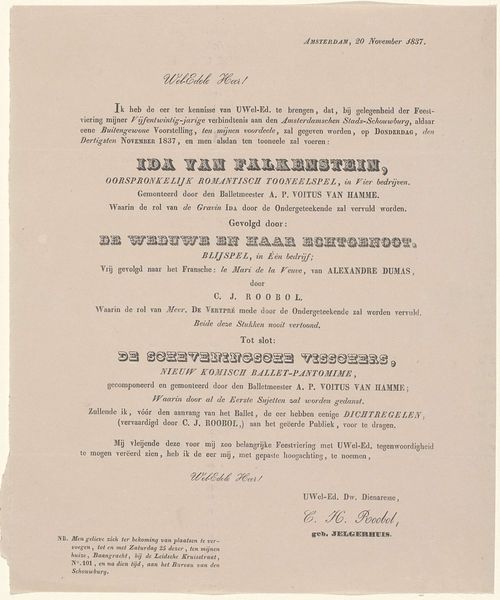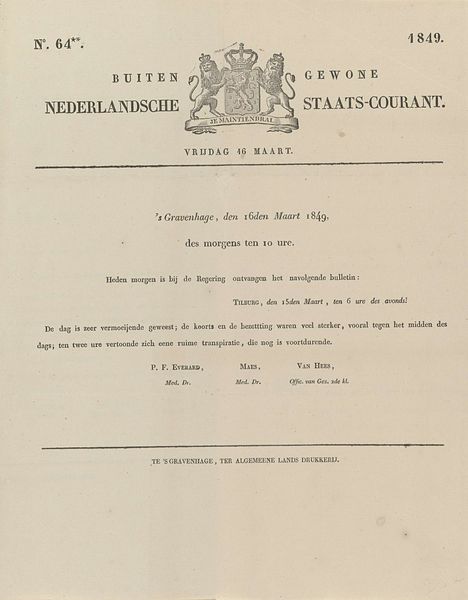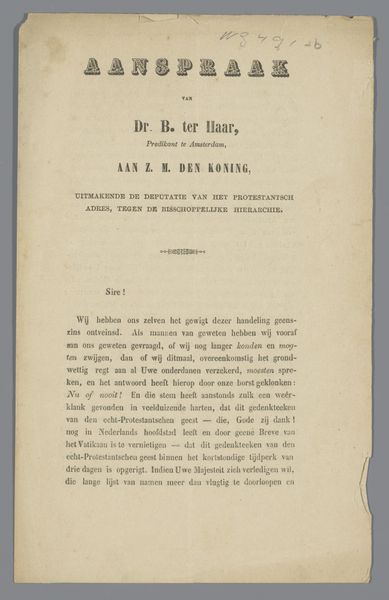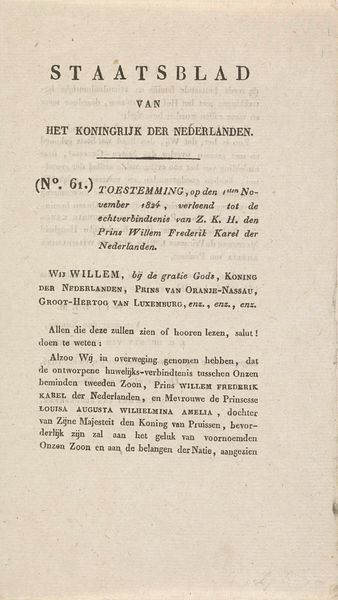
print, paper, typography
# print
#
paper
#
text
#
typography
#
history-painting
#
monochrome
Dimensions: length 34.3 cm, width 21.1 cm
Copyright: Rijks Museum: Open Domain
Curator: Here we have an interesting piece: “Algemeene Order voor het Leger,” or "General Order for the Army." It's a printed document, possibly from 1843, issued under Frederik Carel List, conveying military orders. Editor: My immediate impression is of sparseness. The stark, monochrome presentation, the aging paper... it creates a mood of solemn authority and aged wisdom, almost. The typography feels very… functional. Curator: Absolutely. Its visual simplicity reflects its administrative purpose: a direct line of communication within the military apparatus. These were instruments of governance as much as pronouncements. The reference to colonial service in the Dutch East Indies connects it to broader patterns of imperial power. Editor: The use of typography is telling, isn't it? A variety of fonts creates visual hierarchy; importance is assigned by point size. Look at how the main text stands out above the smaller listed articles of action. And, indeed, the material reality; a print is an inherently reproducible artwork form. A practical and reproducible message seems fitting. Curator: Exactly, it emphasizes standardization within the military's hierarchical structures. Distributing decrees through a form that guarantees legibility and uniformity strengthens command control. This order seems aimed at formally acknowledging meritorious individuals. Editor: This close, detailed focus contrasts well with the stark, bureaucratic overall presentation; even within official orders there are levels of importance—both of system and individual, perhaps! Curator: Considering the date, we should understand this document as a manifestation of the burgeoning centralized nation-state. Public order via print becomes a strategy to enforce standardization, recognition, and the law. Editor: In a nutshell, the piece embodies two concepts in collision and collusion—bureaucracy and individual agency. Curator: A very perceptive analysis! It helps to situate "Algemeene Order voor het Leger" not just as military bulletin, but as a window into a bygone world of imperial and administrative control. Editor: And how the inherent graphic construction and its dissemination helps facilitate the social structure to take place and uphold.
Comments
No comments
Be the first to comment and join the conversation on the ultimate creative platform.
